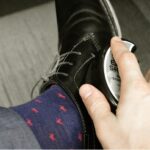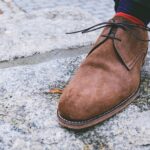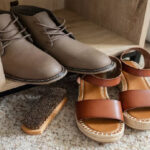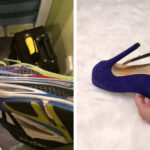Are your shoes looking a little worse for wear? Or maybe you’re just trying to prevent the growth of mildew in order to keep your kicks in pristine condition. Either way, having mildew build up on fabric or leather can rob our shoes of their original luster and style. But it doesn’t have to be this way – you can take several simple steps to get rid of existing Mildew and protect against future encroachments. In this blog post, I’ll show you how to get mildew out of shoes and keep them from reappearing! So read on if you want a tried-and-tested guide that will restore the freshness (and pride) back into any shoe collection!
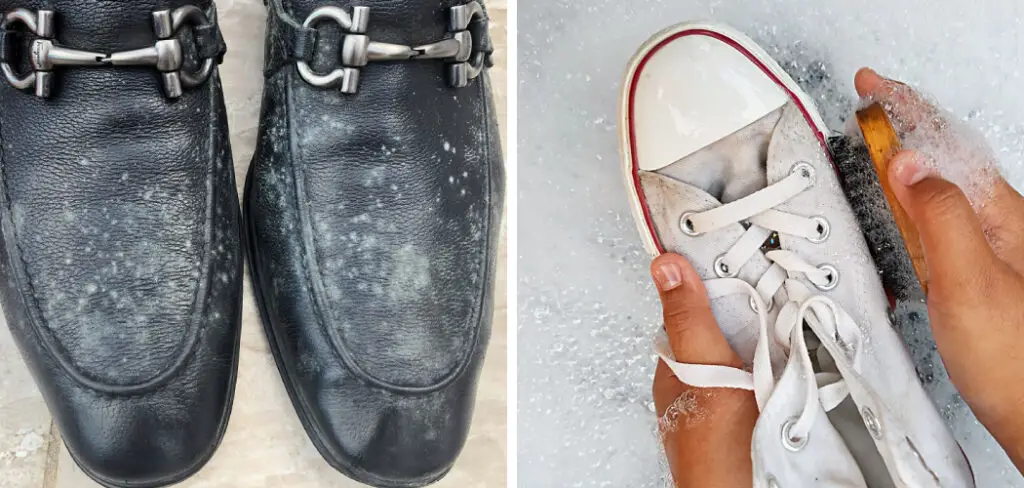
Why is Mildew Growing on Your Shoes?
Mildew is a type of fungus that thrives in damp environments like closets or storage areas. It tends to form on shoes, especially leather ones, due to how porous the material can be. When moisture gets trapped inside the fabric or leather of your shoes, it gives mildew spores an ideal place to settle and grow.
Another, less common reason that mildew might form on your shoes is if they have been stored in a place with poor ventilation or high heat. On particularly hot days when the humidity levels are also high, this combination can lead to some unsavory consequences for our beloved shoes!
What Will You Need?
To get mildew out of your shoes, you’ll need the following items:
- Sponges or soft cloths
- Warm water
- Vinegar (white vinegar is best)
- Antimicrobial soap or dishwashing liquid
- Plastic tub or bucket
- Scrub brush (optional)
- Newspaper or paper towels/tissue paper
- Window fan (optional)
Once you have collected these items, you’re ready to get started on how to remove mildew from your shoes!
10 Easy Steps on How to Get Mildew Out of Shoes
Step 1: Remove Fresh Mildew Stains.
The first step in how to get rid of mildew is to gently wipe away any fresh stains on the surface of your shoes. For this task, you can use a sponge or soft cloth that has been dampened with warm water and a few drops of vinegar. Ensure you avoid saturating the fabric or leather with too much moisture, as it could lead to even more stubborn mildew stains down the road.
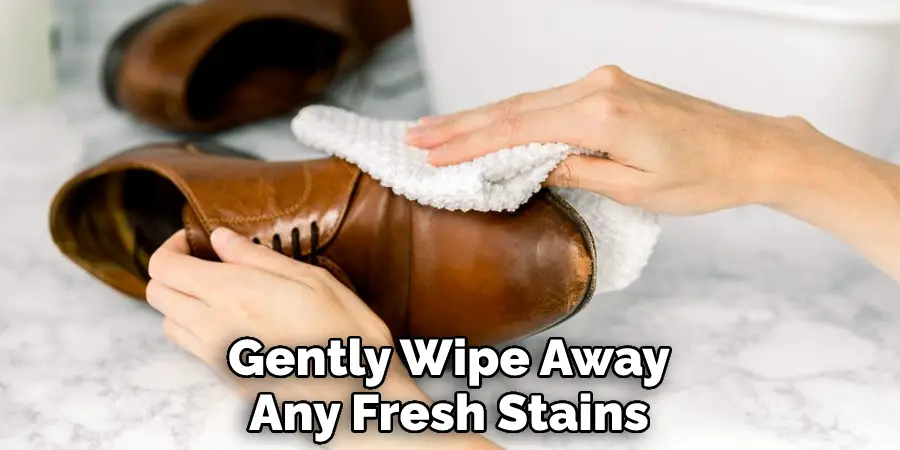
Step 2: Scrub and Soak.
Next, if any existing mildew patches or streaks have begun to set in, it’s time to use a small scrub brush or sponge to work some soap or dishwashing liquid into the affected areas. While doing this, ensure you also soak your shoes in a plastic tub or bucket filled with warm water and vinegar solution. It will help break down any remaining mildew stains and kill off lurking spores.
Step 3: Rinse and Dry.
Once you have thoroughly scrubbed away any signs of mildew on your shoes, it’s important to rinse them well with clean water before drying them off completely. You can use paper towels or newspaper for this step – just try not to get the inside of your shoes wet as you dry them! Make sure they are fully dry before putting them back on.
Step 4: Check and Repeat as Necessary.
Finally, make sure to check your shoes every few days for signs of reappearing on the surface. If you notice any spots or streaks starting to form, just repeat steps 2 and 3 until they have been fully removed! It will take a little bit of time and effort, but you’ll be rewarded with shoes that look as good as new – and the peace of mind that comes with knowing how to prevent future mildew outbreaks.
Step 5. Maintain Your Shoes.
In order to keep your shoes looking fresh and clean, it’s important to take a few simple steps to prevent the growth of mildew in the future. First, ensure that you are storing them in a cool, dry place away from direct sunlight or heat sources like radiators or space heaters. You can also consider placing an airtight container filled with baking soda inside your shoe closet – this will help absorb any lingering moisture and odors.
Step 6: Use Dehumidifiers When Needed.
To further protect your shoes, you may want to use a dehumidifier or fan when appropriate depending on how damp your environment is. This can help keep excess moisture from settling in your shoes and causing mildew growth. For a few dollars, you can get simpler, plug-in models at most home improvement stores.
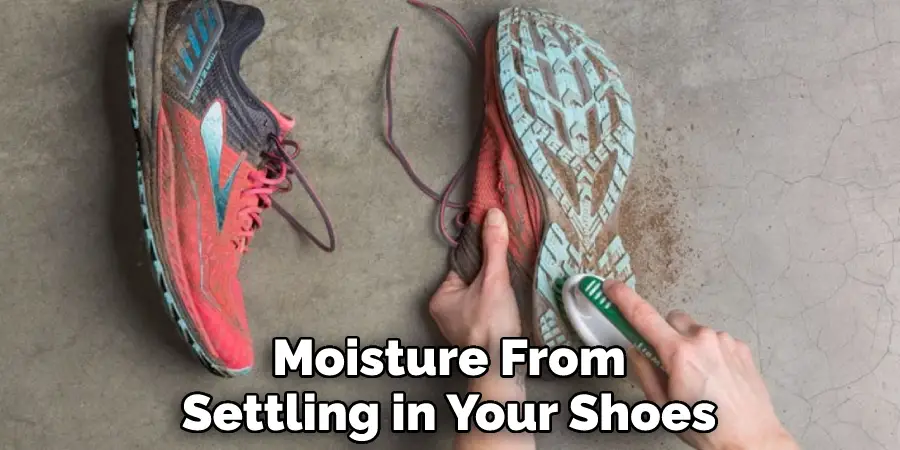
Step 7: Use Anti-Mildew Spray or Solution if Needed.
Sometimes, you may want to use a commercial anti-mildew spray or solution to help get rid of excess mildew on your shoes. Test it out first in an inconspicuous area before applying it to the entire surface. These sprays are typically safe for use on most types of fabrics, so they can be a great option if you’re looking to get mildew out of shoes fast.
Step 8: Replace Your Shoes If Necessary.
While steps 1 through 7 can help you to remove mildew from shoes that have already formed, there may be some cases where it just makes more sense to replace your old shoes with a new pair. This is especially true if the fabric or leather has begun to rot or decompose due to excessive mold and mildew build-up. It is better to spend a few dollars on a new pair than to keep trying to save an old pair of shoes that is past its prime!
Step 9: Clean Your Shoes Regularly.
In addition, it’s also important to consider how to prevent them from returning in the first place. One great way to do this is by investing in regular cleaning products designed for your favorite types of footwear. Just be sure that they are safe for use on whatever material your shoes are made of.
Step 10. Avoid Excess Moisture and Humidity.
Finally, in order to help prevent mildew from forming in the first place, it’s important to do your best to avoid excess moisture and humidity in your environment. This may mean closing windows during humid days or using a dehumidifier when necessary, depending on how much you are dealing with.
Doing so can help maintain the quality of your shoes while also protecting them from the growth of mold and mildew in the long run! These simple steps can help keep your favorite pairs looking fresh and clean for years. So why wait? Start using these tips today and enjoy your shoes how they were meant to be enjoyed – without any unwanted mildew in sight!
5 Additional Tips and Tricks
- If your shoes are made of leather or suede, try using a leather protectant spray to help keep moisture at bay and prevent mildew growth.
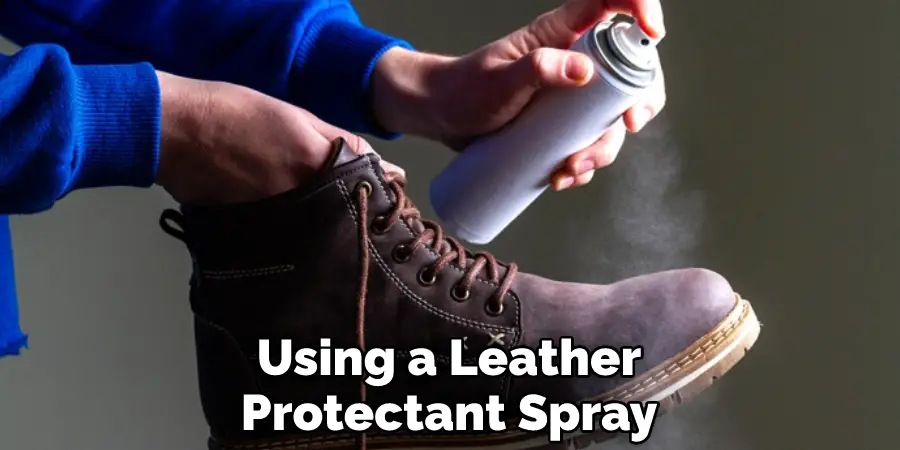
- If possible, always try to air out your shoes after each use by leaving them in a ventilated area.
- If you have any pairs of shoes that are especially prone to mildew growth, consider storing them in plastic shoe boxes or airtight containers when not in use.
- If your shoes are especially dirty or stained, try using a gentle shoe cleaner or stain-removing solution to help make them look new.
- Avoid wearing your shoes in wet or damp conditions whenever possible, as this can increase your risk of developing mildew growth on your shoes.
These tips and tricks can help you keep your shoes looking clean and fresh for years to come, no matter how often you wear them.
What Kills Mildew Naturally?
Several natural remedies can help kill mildew and prevent it from forming. Some common options include using diluted vinegar, tea tree oil, grapefruit seed extract, or hydrogen peroxide on affected areas. You can also try wiping down your shoes with a mixture of water and baking soda or treating them with an acetic acid-based solution for extra protection.
Additionally, ensuring that your shoes are well ventilated and removing wet items promptly after use can help keep mildew growth at bay over time. Finally, if you do find yourself dealing with an outbreak of mildew on your shoes, there are some commercial products available that may be able to help as well. Overall, there are many different natural and commercial options available for effectively killing mildew and preventing it from forming in the future. With a little bit of research and experimentation, you can find the best solution.
Conclusion
To remove mildew from your shoes. You can try any of the abovementioned methods and see which works best for you. Remember to dry your shoes thoroughly after each use in a well-ventilated area to prevent mildew growth. You’ve now learned the best way to remove mildew on your shoes.
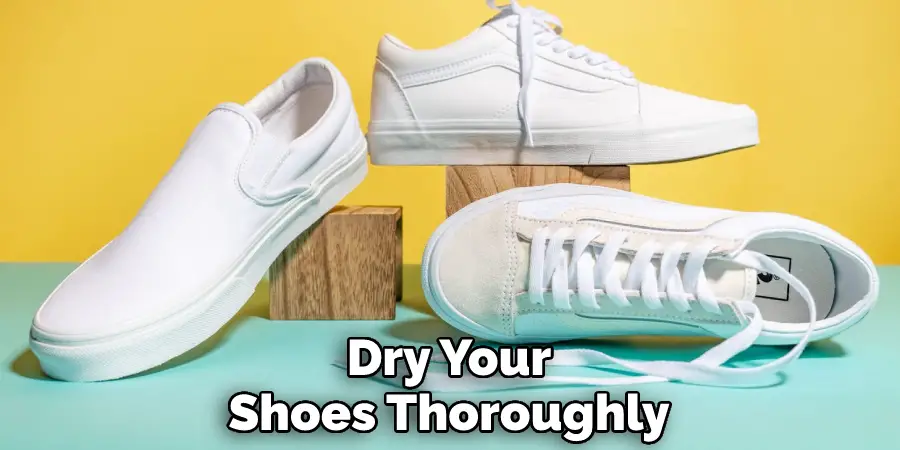
Remember, prevention is key! After you’ve taken measures to prevent mildew, if it does appear, follow these steps, and your shoes will look as good as new in no time. Hopefully, the article on how to get mildew out of shoes has been helpful to you. Good luck in all your future shoe-cleaning endeavors, and happy shopping!



